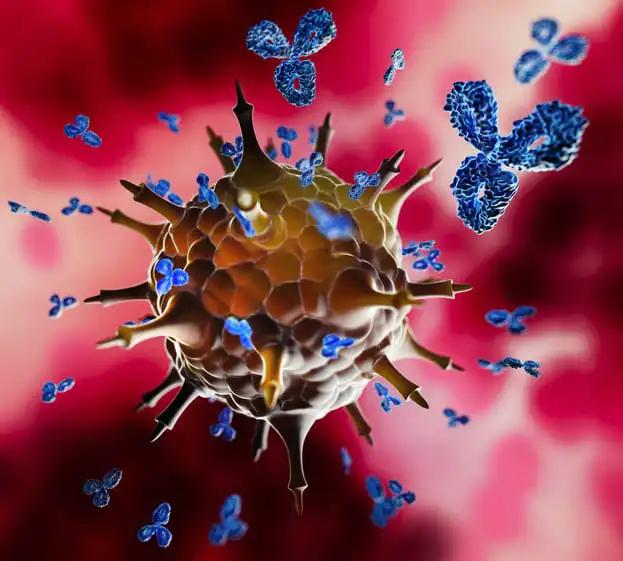KEY TAKEAWAYS
- The PAC326 Phase 3 trial (NCT02055781) aimed to compare the effectiveness and safety of pacritinib and ruxolitinib in patients with myelofibrosis and low platelet counts.
- Patients with platelet counts ≤ 100 x 109 /L were randomly assigned to receive either pacritinib 200 mg twice a day BID, pacritinib 400 mg once a day QD, or the BAT.
- At week 24, patients treated with pacritinib showed a higher rate of SVR, a higher number of mTSS responses, and more improvement in symptoms according to PGIC compared to ruxolitinib.
- Pacritinib had a slightly lower rate of side effects leading to death than ruxolitinib (8% vs. 11%).
- The study concluded that patients with myelofibrosis and thrombocytopenia responded better to pacritinib than lower-dose ruxolitinib.
Pacritinib is an inhibitor of JAK2/IRAK1 that helps people with myelofibrosis and low platelet counts. Pacritinib has been tested at total dose regardless of platelet count, which differs from the JAK1/2 inhibitor ruxolitinib, used at lower doses in patients with thrombocytopenia. Researchers looked back at the phase 3 PERSIST-2 study that compared pacritinib and ruxolitinib, focusing on how the disease made people feel. Patients in PERSIST-2 with platelet counts of ≤100 x 109/L were given either pacritinib 200 mg twice a day (BID), pacritinib 400 mg once a day (QD), or the best available treatment (BAT). This study looked at people who took ruxolitinib before week 24 and took 200 mg BID. Endpoints included the number of patients with a ≥35% in spleen volume (SVR), a ≥50% in the modified total symptom score (mTSS), and a change in disease symptoms as measured by the Patient Global Impression of Change (PGIC). Safety analyses were done on all of the treated patients. In contrast, effectiveness analyses were done on the “intention-to-treat” group that had been randomly assigned at least 22 weeks before the end of the study. The Fisher Exact test was used to show how responses were different. Logistic regression was used to account for changes in things at the start.
In the safety analysis, 106 patients took pacritinib, and 44 took ruxolitinib. In the effectiveness analysis, 74 people took pacritinib, and 32 took ruxolitinib (with a median daily amount of 10 mg). Both groups had similar features at the start, like the exact median platelet count (55 vs 61 x 109/L) and about the same number of people who got an RBC transfusion (46% vs 43%). Multivariable modeling took into account these changes in baseline characteristics: the number of patients with grade 3 fibrosis (58% vs 36%), the number of patients with primary myelofibrosis (77% vs 50%), the number of patients with 1% peripheral blasts (45% vs. 61%), and the number of patients who had already taken a JAK2 inhibitor (48% vs 73%). At week 24, patients who were given pacritinib instead of ruxolitinib had a higher rate of SVR (22% vs 3%, p=0.02) and a higher number of mTSS response (35% vs 19%; p=0.11). More patients who took pacritinib said their symptoms got “much” or “very much” better (35% vs 16%, P=0.06). At week 24, 50% of ruxolitinib-treated patients with an available PGIC measure said their symptoms didn’t get better or got worse, while 76% of pacritinib-treated patients said their symptoms got better. After adjusting for differences in baseline traits, there was no decrease in treatment effect on SVR or mTSS, and the hazard ratio for survival was 0.46 [95% CI: 0.15-1.43] for pacritinib vs. ruxolitinib. Compared to ruxolitinib, pacritinib had a slightly lower rate of side effects that led to death (8% vs 11%). Both pacritinib and ruxolitinib caused bleeding at about the same rate (43% vs 41%). On pacritinib and ruxolitinib, there were low rates of herpes zoster recurrence (n=0 vs 1), fungal skin infection (n=0 vs. 1), pulmonary aspergillosis (n=1 vs. 0), deep venous thrombosis (n=0 vs. 1), and pulmonary embolism (n=1 vs 0). The study revealed that patients with myelofibrosis who have mild or severe thrombocytopenia responded better to pacritinib than to lower-dose ruxolitinib, and the side effects were the same.
Source:https://library.ehaweb.org/eha/2022/eha2022-congress/357928/claire.harrison.retrospective.comparison.of.patient.outcomes.on.pacritinib.html?f=menu%3D6%2Abrowseby%3D8%2Asortby%3D2%2Amedia%3D3%2Ace_id%3D2233%2Aot_id%3D26855%2Amarker%3D1769%2Afeatured%3D17676
Clinical Trial: https://clinicaltrials.gov/ct2/show/NCT02055781
Claire Harrison, Prithviraj Bose, Ruben Mesa, Aaron Gerds, Stephen Oh, Jean-Jacques Kiladjian, Valentin García-Gutierrez, Alessandro Vannucchi, Christof Scheid, Marta Sobas, Srdan Verstovsek, Sarah Buckley, Karisse Roman-Torres, John Mascarenhas/RETROSPECTIVE COMPARISON OF PATIENT OUTCOMES ON PACRITINIB VERSUS RUXOLITINIB IN PATIENTS WITH MYELOFIBROSIS AND THROMBOCYTOPENIA/Inc, M. G. (n.d.). RETROSPECTIVE COMPARISON OF PATIENT OUTCOMES ON PACRITINIB VERSUS… by Prof. Dr. Claire Harrison. Library.ehaweb.org. Retrieved June 7, 2023, from https://library.ehaweb.org/eha/2022/eha2022-congress/357928/claire.harrison.retrospective.comparison.of.patient.outcomes.on.pacritinib.html?f=menu%3D6%2Abrowseby%3D8%2Asortby%3D2%2Amedia%3D3%2Ace_id%3D2233%2Aot_id%3D26855%2Amarker%3D1769%2Afeatured%3D17676



